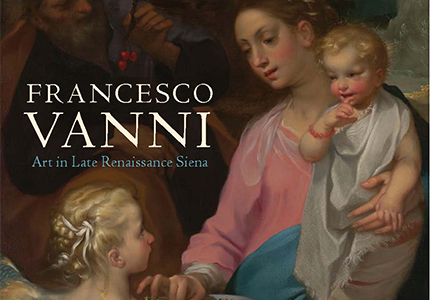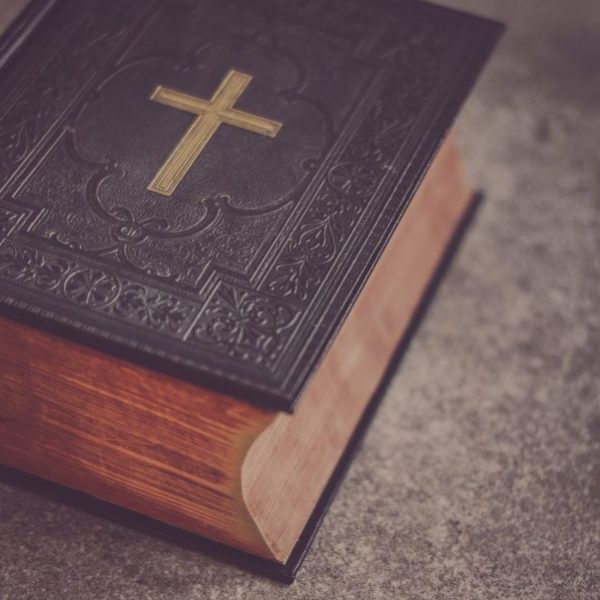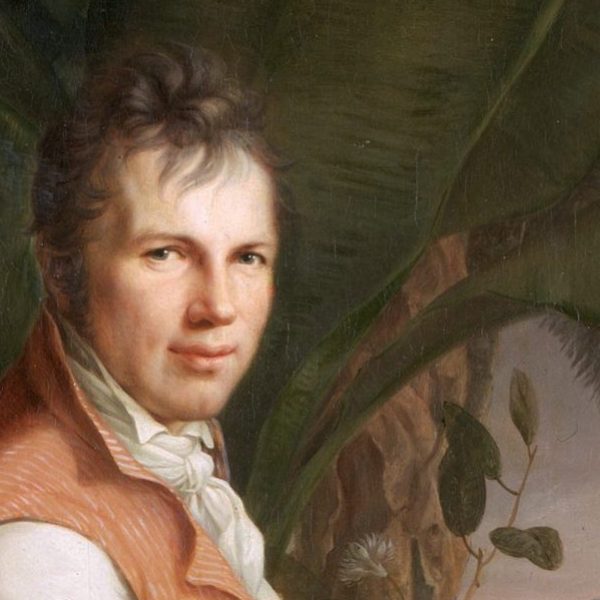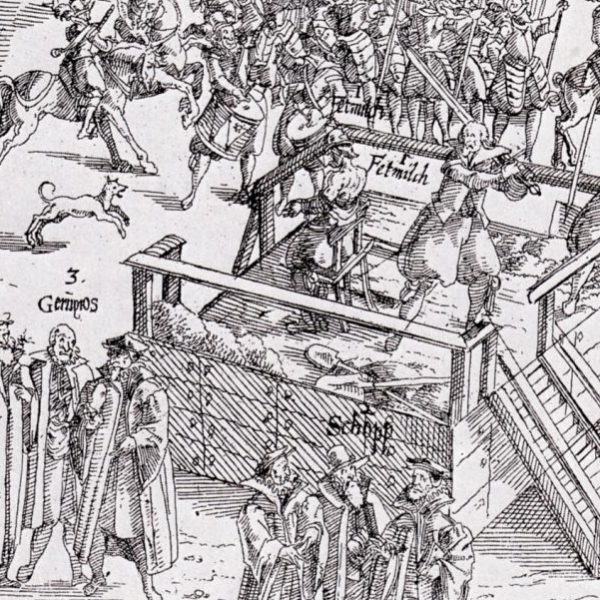Countering the Reformation in Color
Francesco Vanni: Art in Late Renaissance Siena is now on view at the Yale University Art Gallery and will run through January 5, 2014. The accompanying catalog was written by John Marciari and Suzanne Boorsch and copublished by the Yale University Art Gallery and Yale University Press.
Q & A with John Marciari
- Although Francesco Vanni was among the most renowned artists in 17th century Siena and was considered at the time to be among the most talented and significant artists of the Counter-Reformation, his life and work have received little scholarly attention until recently. What do you think is driving the revived interest in Vanni?
With respect to this exhibition and catalogue, the primary motivation came from the purchase (by the Yale University Art Gallery) in 2003 of Vanni’s Madonna della Pappa, one of the artist’s most famous works. This led me to suggest an exhibition on the artist, who for all his importance and inherent interest had never been the subject of a monograph or monographic exhibition. Completely independent of our exhibition’s beginnings, though, Italian Counter-Reformation and later Sienese painting seem to have come into their own in recent years. For example, Vanni modeled himself on the artist Federico Barocci, and there have been two major exhibitions on Barocci in the past three years, one in Saint Louis and London and another on Barocci and his followers that was held in Siena. The Sienese scholar Marco Ciampolini has also just published an enormous three-volume history of 17th-century Sienese painting.

Vanni’s Madonna della Pappa is featured on the jacket of the Yale University Art Gallery’s “Francesco Vanni: Art in Late Renaissance Siena” exhibition catalog.
It’s difficult to say exactly what sparks this interest. I don’t think it’s just a search for new topics—for painters and paintings that haven’t received much attention. It might be that the works remain fascinating, and the old prejudices against the Counter-Reformation have died out in the current, primarily secular age, so that the paintings are able to be seen essentially as works of art and not as figments of church propaganda. There was a conference at the Frick recently about the history of collecting Baroque art in America, and despite the lamenting refrain there of older scholars that Baroque art is a dying field, there are now quite a few young scholars (especially museum curators) who are really engaged with paintings of the later 16th and 17th centuries.
- What are the most distinctive elements of Vanni’s style?
The first thing that most viewers today would note, when looking at Vanni’s paintings, are the colors: one could say that there are Vanni pinks and Vanni blues that are themselves a sort of leitmotif in his works. Contemporary critics used the words “vago colore” to describe these: “vago” is a tricky word to translate, but it means something like “ravishing”—the idea being that such colors provoke a physical as well as intellectual response from the viewer. Nearly all of Vanni’s work is devotional painting, and he was constantly trying to combine the visionary and the naturalistic. In the Madonna della Pappa, for example, Vanni has domestic touches such as the porcelain plate and golden spoon, or the Christ Child’s coral teething bracelet, that would have been familiar to viewers of the painting; they would have made it seem like an approachable extension of the viewer’s world. The bright colors, however, especially in the way that angel at lower left is painted, serve as a reminder that this is not ordinary. Likewise, so many of Vanni’s works depict saints at the moment of a mystical, visionary experience (the Pardon of Saint Francis, or the Vision of Saint Thomas Aquinas, or Saint Catherine of Siena Drinking the Blood from Christ’s Wound), and those bright colors, often set off against a dark background, make clear to the viewer that the scene is something extraordinary.
Vanni was, by all accounts, a deeply devout man. I don’t think it’s necessary for the painter to be devout in order to paint convincing devotional paintings, but Vanni was particularly connected to a number of the new Counter-Reformation movements (the Oratorians, for example) and their leaders. The devotional practices of those groups, it seems, led Vanni to ask himself about the role of sacred art, so that there is a self-consciousness to his work that is even evident in his preparatory drawings: we see him working and reworking compositions, as if to make certain that the correct point was emphasized. His was a search for a kind of devotional and pictorial orthodoxy. Vanni lived, moreover, in a generation that was recasting the course of art (one thinks of his contemporaries Annibale Carracci and Caravaggio), and Vanni was perhaps particularly concerned with how new artistic styles could be used to give physical form to the new devotional practices.
Notes from the Field: Francesco Vanni exhibition at the Yale University Art Gallery
On December 13th, 1545, Pope Paul III convened the Council of Trent and tasked the church fathers with revitalizing the Catholic Church, discredited by widespread corruption and now threatened by the Protestant Reformation. Over the next 18 years, the Council of Trent would initiate a series of institutional reforms, affirm and clarify basic tenets of the Catholic faith, and inspire a new spirituality that would take various forms in the religious orders of the Jesuits, Franciscans, and Carmelites. The Council of Trent would also have a profound and long-lasting influence on art. While Protestants condemned religious art as idolatrous, the Catholic Church sought to revive a petrified Catholic faith with a newly exuberant and dramatic style of art.
Born in the last year of the Council of Trent, Francesco Vanni would be among the primary inheritors and drivers of its legacy. Vanni’s masterful style of painting is brilliantly showcased in the Yale University Art Gallery’s recently opened exhibit Francesco Vanni: Art in Late Renaissance Siena. The exhibit is comprised of over 65 paintings, drawings, and prints by Vanni and a small group of related works by his contemporaries. One of Vanni’s masterpieces, the Madonna della Pappa, acquired by the Yale University Art Gallery in 2003, anchors the exhibit. Its radiant coloring and inviting intimacy draws the viewer immediately and inexorably towards it. The painting features the Virgin Mary feeding the infant Jesus “pappa,” or moistened bread, from a porcelain bowl held by a young angel. The brilliant pink and blue of Mary’s robes, the shimmering golden locks of the Christ child, and the luscious red of the cherries dangling from Saint Joseph’s fingers overwhelm the viewer, provoking a deep and visceral response.
The painting is surrounded by sketches and engravings that relate to it and to Vanni’s other works. Although smaller and devoid of color, these command equal attention. The playful fluidity of Vanni’s preparatory ink drawings contrasts with the refined and detailed composition of the final oil paintings. The exquisitely detailed and expressive figure studies done in warm red chalk focus the viewers’ attention on the individual personalities that comprise the finished works. The engravings, mostly executed by skilled craftsmen, invite viewers to reconsider the original paintings, which take on a new character and quality when pared down to the most basic lines and shading.
As John Marciari notes in his interview with Yale University Press, few art historians have devoted much attention to the art of Counter-Reformation artists. Until recently, Counter-Reformation art has often been dismissed as Catholic propaganda or sentimental kitsch. Vanni, however, marries religious motifs with technical virtuosity and radiant coloring, producing a genuine artistic tour de force. Francesco Vanni: Art in Late Renaissance Siena makes it clear that that explicitly devotional and orthodox art is still extraordinary art worthy of our attention.
Francesco Vanni: Art in Late Renaissance Siena will run through January 5, 2014, at Yale University Art Gallery. The exhibit is accompanied by an exquisitely illustrated catalog written by John Marciari and Suzanne Boorsch and copublished by the Yale University Art Gallery and Yale University Press.


























